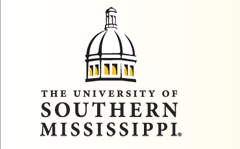Title
UNIVERSITY RESEARCH PARKS: A TOOL FOR NATIONAL COMPETITIVENESS OR JUST A REAL ESTATE TRANSACTION?
Date of Award
Spring 5-2007
Degree Type
Dissertation
Degree Name
Doctor of Philosophy (PhD)
Department
Economic and Workforce Development
Committee Chair
Dr. Kenneth Malone
Committee Chair Department
Economic and Workforce Development
Committee Member 2
Dr. David Butler
Committee Member 2 Department
Political Science, International Development, and International Affairs
Committee Member 3
Dr. Cecil Burge
Committee Member 4
Dr. Brent Hales
Committee Member 5
Dr. D. von Herrmann
Committee Member 6
Dr. James T. Johnson
Abstract
Nations searching for a competitive edge in the global economy often focus on the promotion o f innovation and advanced technology. A common economic intervention towards this end is the formation o f university research parks. University research parks are generally intended to accelerate the transfer of technology from academia to industry.
Porter’s cluster model predicts that the core competencies of the universities should do to align with the technical and workforce needs o f the companies located in the university research parks. This study finds that this is not the case. The 504 organizations in 19 United States mid-life University Research Parks demonstrated no correlation between the fields that the companies were engaged and the amount o f research funding that the associated university received in that field. There was also no correlation between the number of companies in each field with the numbers of graduating students or faculty in each of the fields at the university. There was a small correlation o f the total research funding at a university and the number of companies found in their university research park.
The findings indicate that current economic interventions using university research parks in the USA do not reflect the Porter cluster model. While this study did not address the economic effectiveness of university research parks, other studies have demonstrated marginal or no value to the economy. Future work should address if better implementation o f the Porter model can result in a more significant impact from university research parks.
Copyright
2007, Elixenia Biron
Recommended Citation
Biron, Elixenia, "UNIVERSITY RESEARCH PARKS: A TOOL FOR NATIONAL COMPETITIVENESS OR JUST A REAL ESTATE TRANSACTION?" (2007). Dissertations. 1237.
http://aquila.usm.edu/dissertations/1237
Included in
Educational Leadership Commons, Higher Education Commons, Other Business Commons, Other Education Commons, Technology and Innovation Commons
